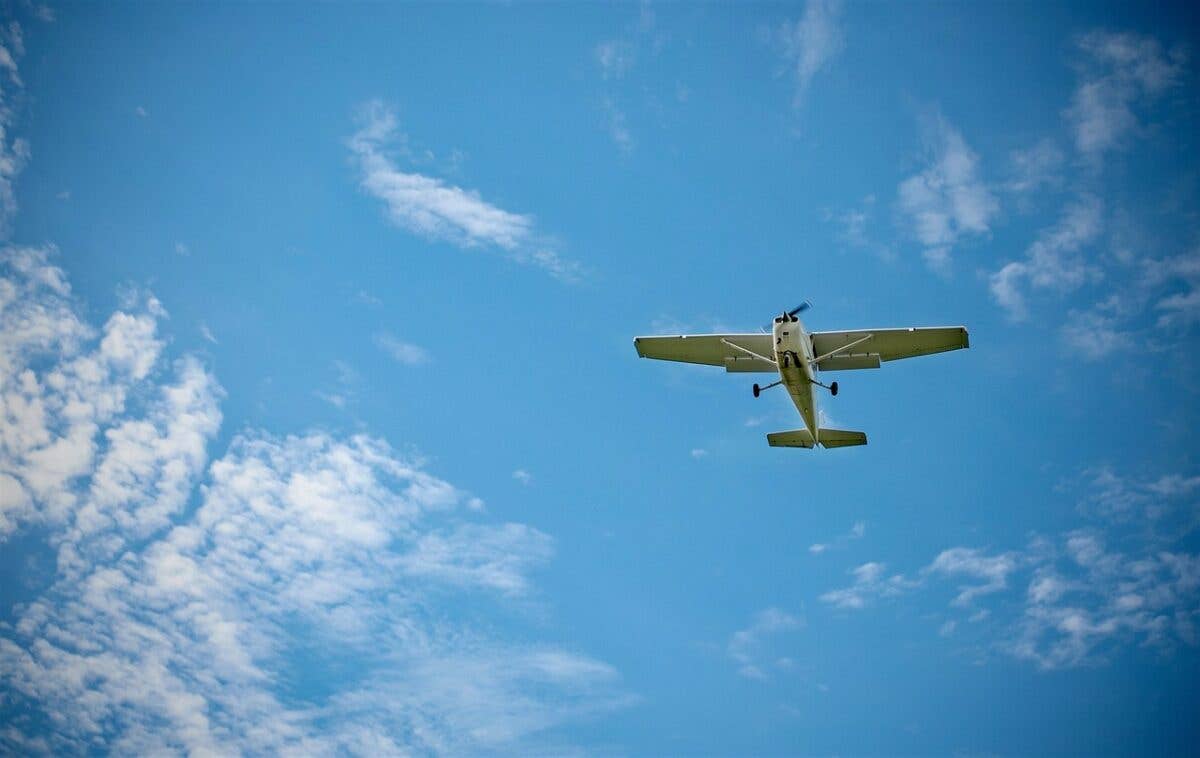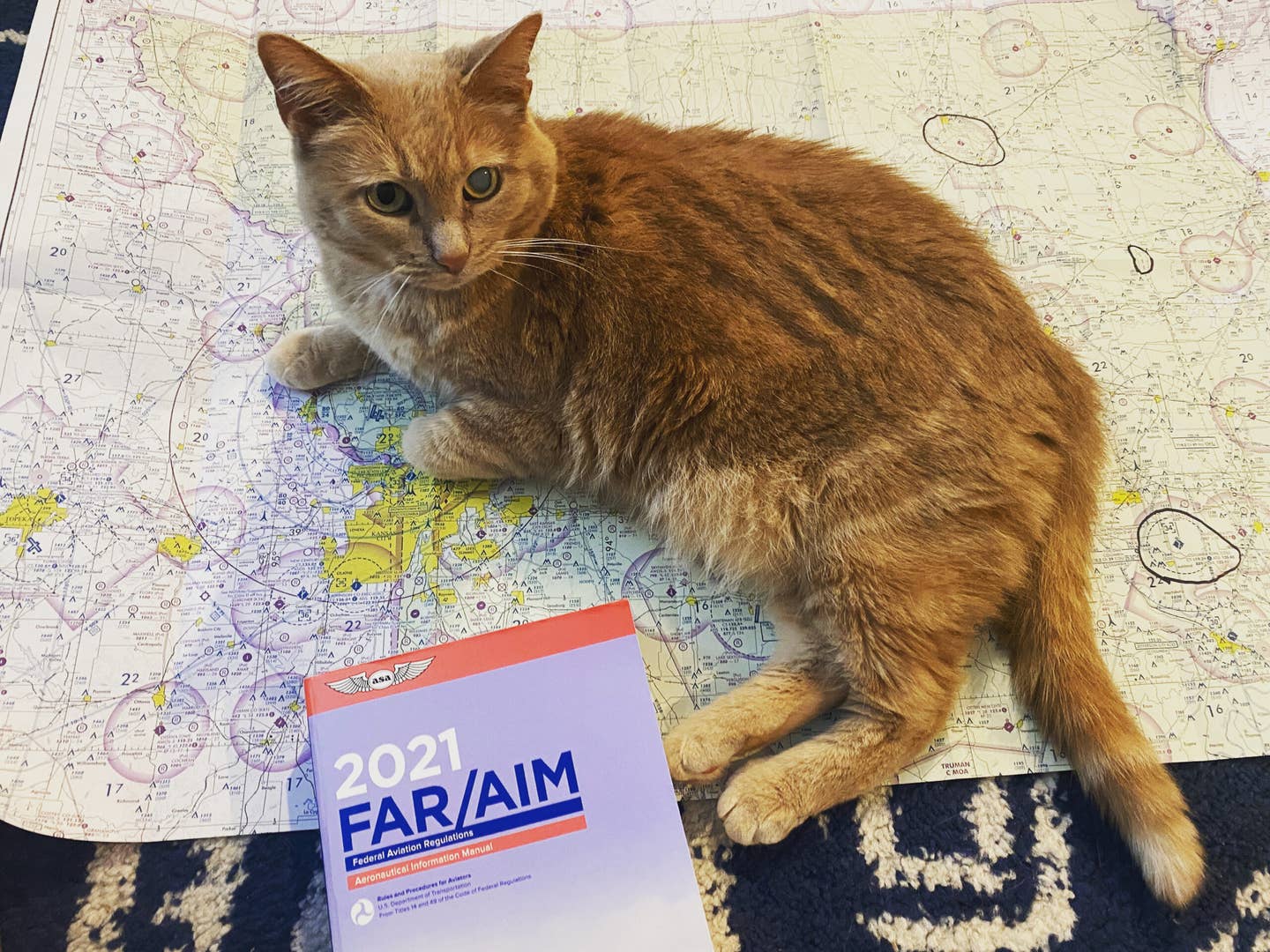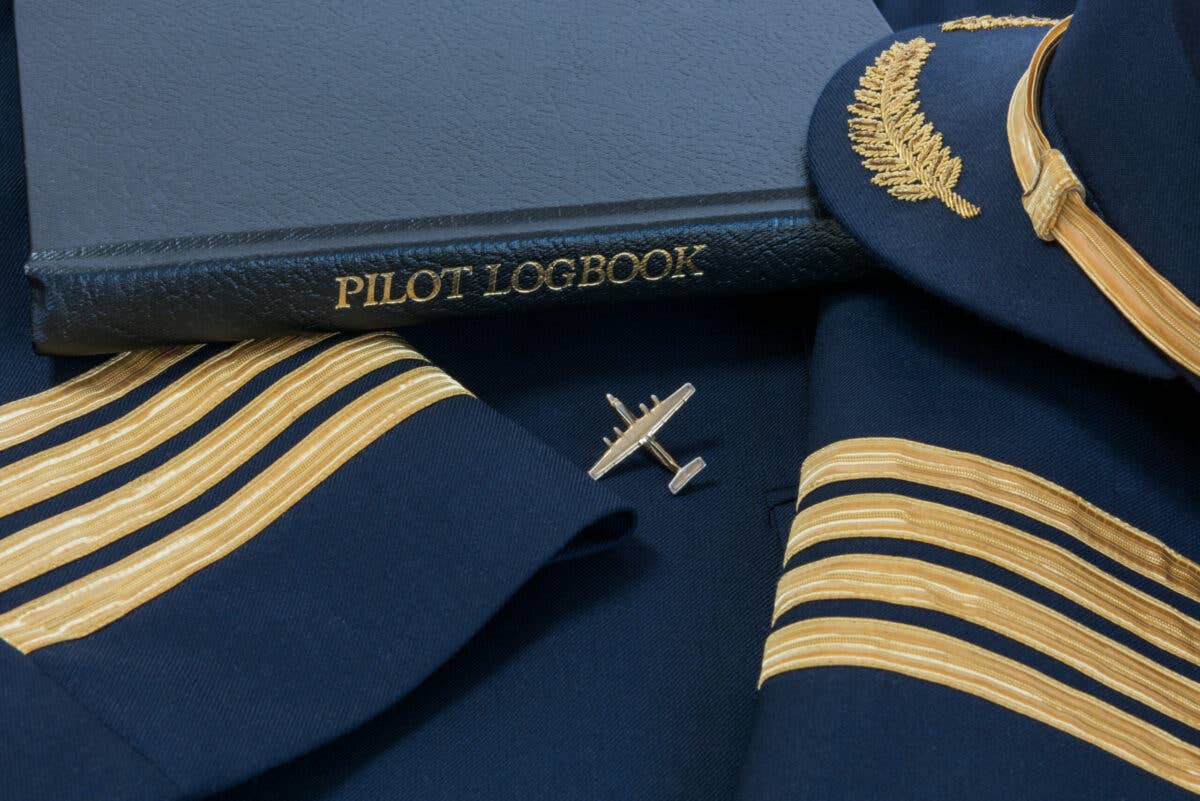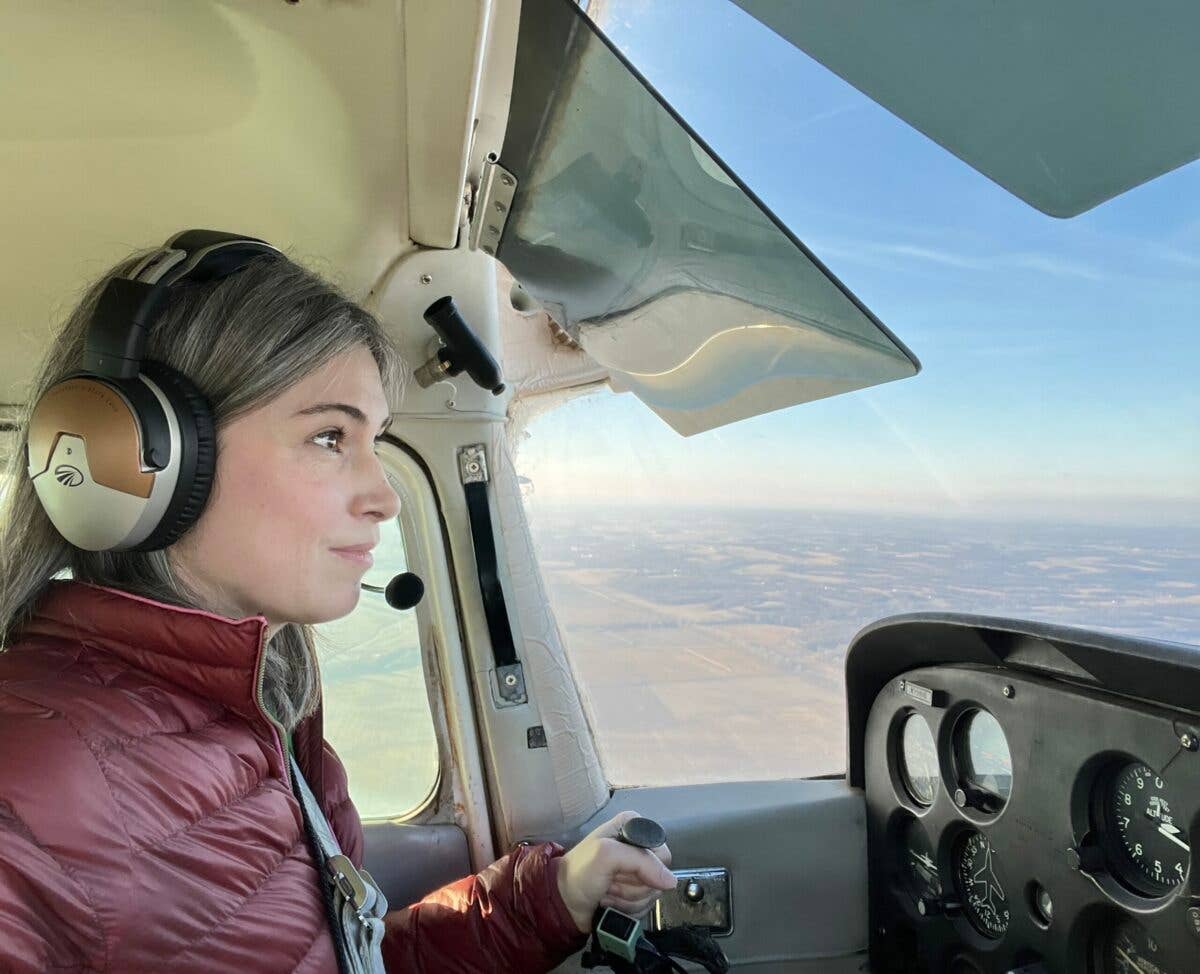The Gravity of Trust
A good teacher meets a student where they ask to be met and nudges them out of their comfort zone at just the right moment.

I knew much of my unease stemmed from not knowing my instructor or his Cessna 172 yet, which would hopefully lessen over time. [Courtesy: Pixabay/jotoya]
I showed up to my second flying lesson with a sketchbook, the traffic pattern penciled in and labeled across one page, with spaces left for airspeeds. My instructor and I usually have a preflight meeting, during which we cover topics relevant to that day’s flight and he gives me an opportunity to ask questions.
I had been stewing about my nerves during the first lesson and doing my best to identify a tangible cause I could take steps to resolve. I knew much of my unease stemmed from not knowing my instructor or his Cessna 172 yet, which would hopefully lessen over time. I also knew that I was nervous about my lack of knowledge and the possibility that I could mess something up. I spent hours poring over my textbook, book of maneuvers, and YouTube videos, trying to glean as much as possible about the mysteries of flight.
To enjoy flying, I knew I had to face and conquer my nerves and lack of knowledge. I wore myself out. “I think you’re trying to know too much all at once,” cautioned a wiser, newly-minted pilot friend in Colorado.
So I narrowed it down to one thing I was worried about: landings. What goes up must come down. I reasoned that I wanted to come back to terra firma in a condition to go back up again. I didn’t like going up without the coming down skills mastered.
I pulled out my sketchbook and nervously asked my instructor if he would talk me through the steps of flying the pattern and landing before the lesson. He looked at my sketch, leaned back, and rested his arm on his desk, eyeing me.
“You do realize we’re going to get to this,” he said quietly. The corners of his mouth quirked almost imperceptibly.
“Yes! Yes, I know. But…what if we go out for a lesson and something happens to you? I at least want an intellectual grasp of what to do so I’m not frantically asking for directions over the radio. Or at least, I want to have something in my head to begin with.”
The quirk vanished. My instructor nodded and bent over to talk me through landing a 172, filling in the blanks on my sketch and answering my questions as they bubbled up.
I felt some of my nerves dissipate, and a sense that I’d passed through a critical instructor-student bottleneck. I didn’t say so aloud, but I had made up my mind that if my CFI tried to brush aside my concerns, I would walk out as politely as I could without flying that day. I knew the lecture I requested wouldn’t teach me everything I needed to know.
But what my instructor really taught me that day was that I could trust him. He took my nervous novice question seriously. He showed a willingness to meet me where I needed to be met at that moment to feel comfortable and learn. So I got into the airplane.
As we climbed and headed to our practice area, I asked, “If I do something really stupid and put us into a spin, you’re going to save us, right?”
“I have plans later that I don’t want to miss,” he batted back. “I won’t let you do anything stupid,” and I relaxed a little more. Then he used the question as a teaching moment, explaining exactly what I’d have to do to put a Cessna 172 in a spin, pointing to the instruments and flight controls and weaving information naturally into the moment. He stopped short of demonstrating.
As we climbed to 3,500 feet, we saw a hawk playing in an updraft. It lazily described a vertical loop ahead of us and to the right. My instructor pointed. “Watch that bird.”
So I watched that bird.
I was fascinated as it looped above our altitude and reached the top of its parabola, pointing itself downward but disappearing quickly behind us as it lazily began its descent. I swear it glared at me. I didn’t know hawks flew so high. My instructor craned to watch behind us as we passed, his hands hovering over the controls. He levitated slightly out of his seat. All of this happened in the span of a couple of seconds.
Noting his unease, I titled my head. I think that’s the only time I’ve seen him unsettled. “So, what should I do if I see a bird,” I innocently asked. “Turn?”
I did a lot of reading about bird strikes that night. I now understand why the moment rattled him, and why his reaction to my question was carefully controlled affirmation. Birds are a hazard I’m constantly alert to, but in most cases, there’s not a lot I can do to avoid them—like the day last month when three geese passed five feet or so under the nose as we climbed out for a short cross country.
It’s kind of like deer when you’re driving. You do your best to fly safely and keep an eye out. In some cases, you can react. I don’t worry about them.
What I do worry about is doing something in a moment of inattention or distraction that I can’t take back. I worry about things that are within my control. And I watch those birds.
Before my third lesson, I took the opportunity to ask my instructor another question. “If we’re in the air and lose the pitot-static system, how do we safely navigate the pattern and land?” I had been reading.
He nodded and shared a personal anecdote: He’d been in an airplane in which hornets had built a nest inside the static port and couldn’t be seen during the preflight inspection. They didn’t know that was the cause until a mechanic later found the nest. “If I hadn’t seen it with my own eyes, I would never have believed the story,” he said. On takeoff, they had no airspeed, altimeter, or vertical airspeed, but safely flew the pattern and landed.
“How?” I wanted to know.
“You can listen to the engine. You can also use the tachometer to see your engine’s rpm, and pay attention to your pitch.”
We went out and flew our textbook lesson and returned. Relief and elation bubbled up as we taxied off the runway. I had completely forgotten our earlier conversation.
“Ok, head back to 18,” my instructor said, indicating a right turn with his thumb. The relief and elation bubbled right back down again.
“What?” I looked left, eyeing the ramp and the FBO’s reassuring proximity to solid earth.
I wanted to enjoy being on the ground, processing my lesson, basking in self-pride at overcoming another small hurdle. I dutifully pointed the nose back toward Runway 18, swallowing hard.
“You were asking about flying without your airspeed indicator,” my instructor began as a Post-it note materialized from thin air in his hand. I am now convinced CFIs everywhere have the power to manifest Post-it notes at inconvenient times. He leaned over and covered the instrument, as my heart sank. I could live without having all of my questions answered so thoroughly, I thought.
But another part of me whispered that I might lose an instrument one day, and practicing what to do now under the guidance of an instructor might help me handle it with calm composure. So I followed instructions and took off. As our wing spar passed the runway threshold on the base leg of the pattern, I eased back the throttle and held up the nose, listening. I’d only flown the pattern a few times, but he was right. I could hear and feel when it was time to add my first notch of flaps. We made it safely back to earth, but the relief didn’t bubble back up. I had a lot to think about.
After that lesson, I got smart. I didn’t ask a preflight question for weeks, saving them instead for afterward. This has been a source of some amusement.
But I have to admit that the mark of a good teacher isn’t just meeting a student where they ask to be met—or in an intellectual space. It’s also about nudging them out of their comfort zone at just the right moment. Sometimes I feel like a fledgling bird being pushed over the edge of the nest. To my surprise, I find I can do what’s being asked.
I think any student would prefer to avoid the worst-case scenario survival training that takes up a significant portion of flying lessons. There’s nothing quite like the adrenaline spike when your instructor unexpectedly pulls your throttle to practice an emergency landing. Or, after you wise up and start keeping your hand on the throttle at all times in the pattern, tells you to pull it to idle yourself.
“Seriously?” I’d ask with a groan.
“What’s your best glide?” is all I’d get in return.
I am certain that if my engine ever fails, my instructor will be right there next to me, whether he’s physically there or not, refusing me room for hesitation. “What’s your best glide? Roll that trim. Don’t let the airplane turn into a giant lawn dart.”

Subscribe to Our Newsletter
Get the latest FLYING stories delivered directly to your inbox



